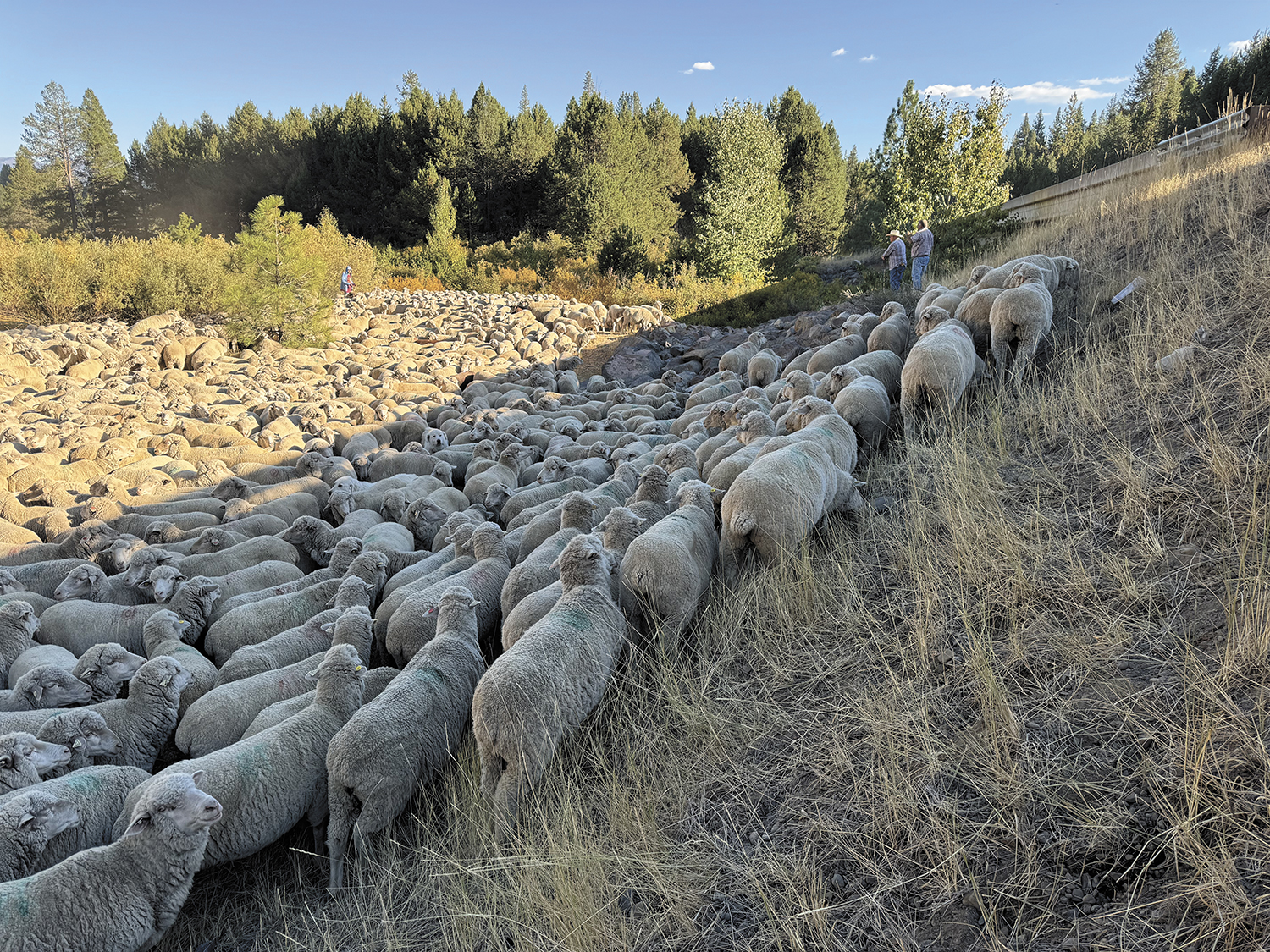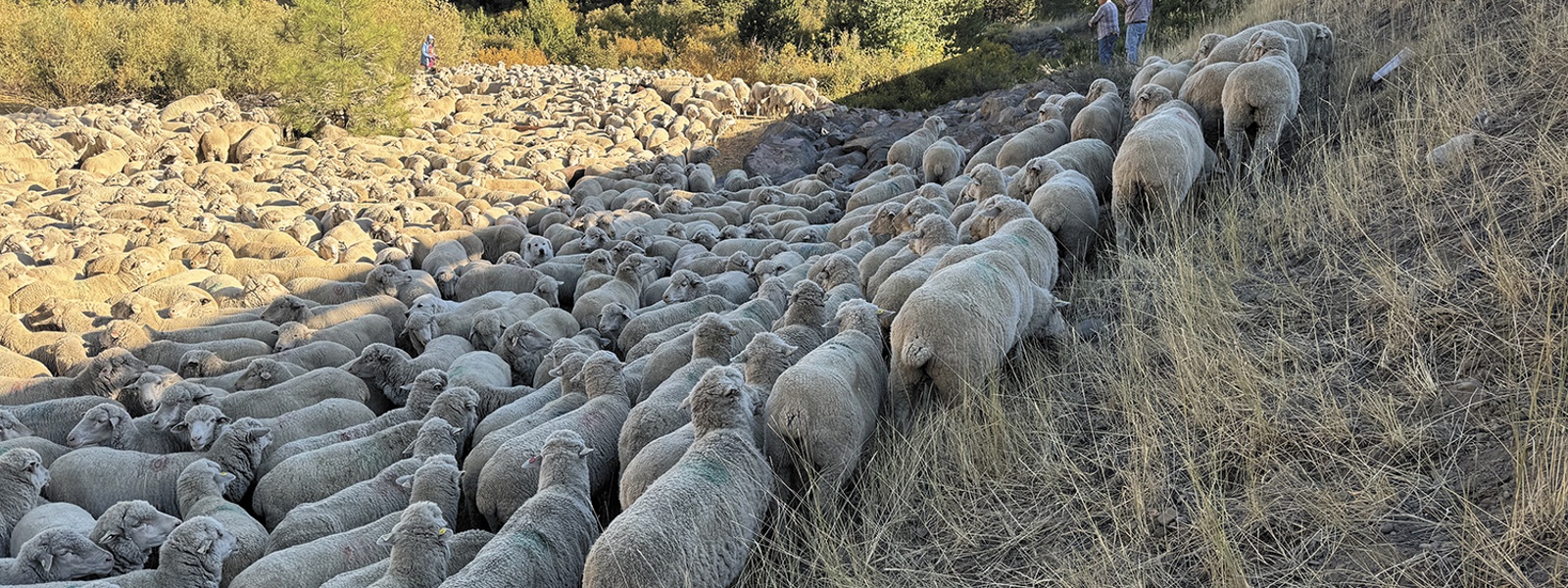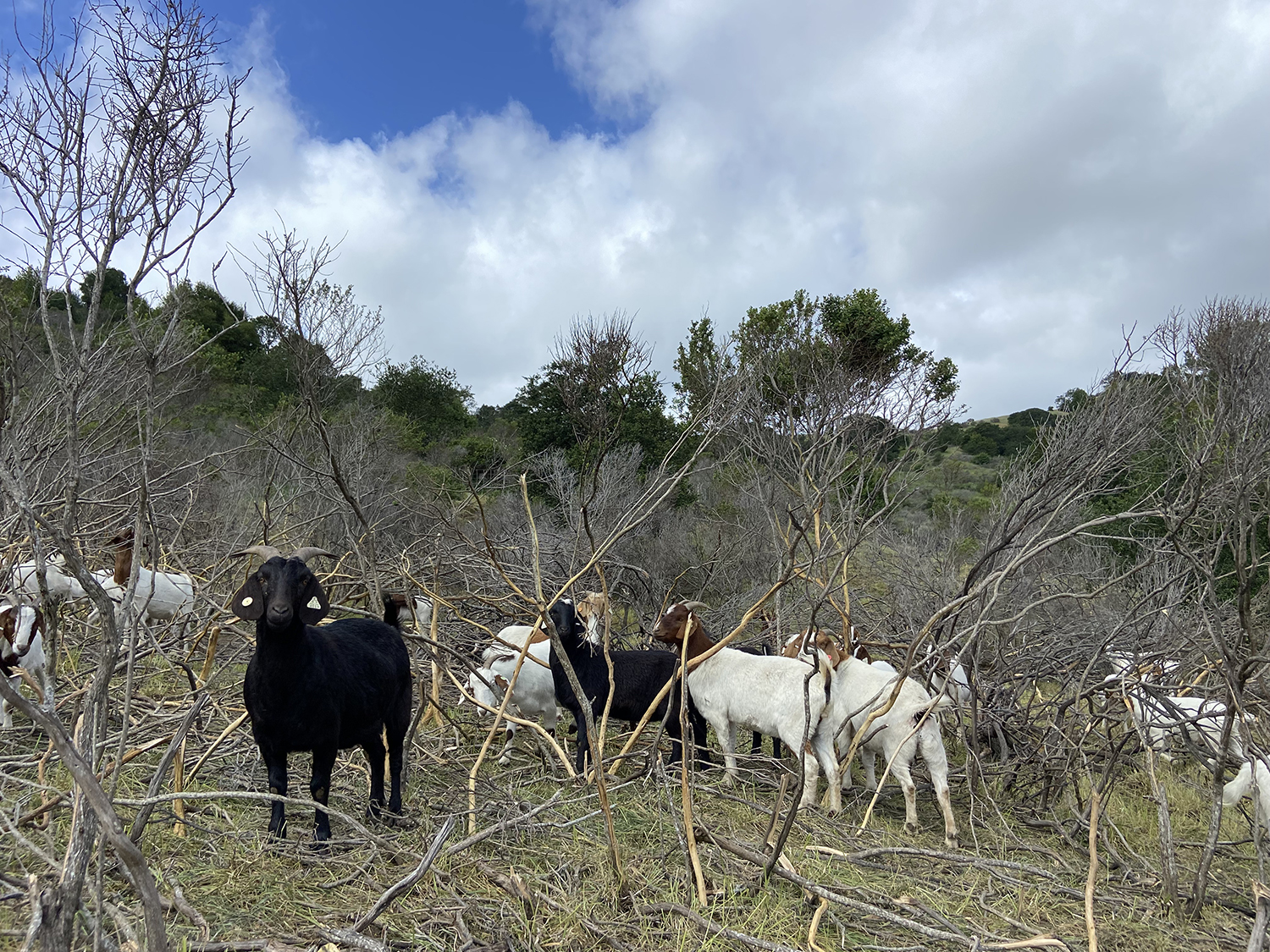Farmers encouraged to use targeted grazing as tool

Sheep graze at Blodgett Forest Research Station in Georgetown, El Dorado County. University of California researchers are studying the effectiveness of targeted grazing by sheep and goats to reduce vegetation and prevent wildfires.
Photo/Dan Macon

By John Watson
By increasing the use of targeted grazing, California ranchers and farmers can play crucial roles in building statewide resilience against future wildfires.
That was a key takeaway from the Rustici Rangeland Science Symposium at the University of California, Davis, in February.
Because targeted grazing can effectively reduce fuel loads and manage invasive weeds, it can be a key strategy for reducing wildfire risk on forests and rangelands, said UC Cooperative Extension livestock and natural resources adviser Dan Macon.
Livestock grazing occurs on some 30 million acres of public and private land in California, he pointed out. But most of that activity is traditional grazing, in which fuel reduction is incidental to livestock production.
Prescribed grazing, which he described as “the controlled harvest of vegetation with livestock,” often provides multiple co-benefits, including watershed protection, fuel load reduction and livestock production goals.
“Targeted grazing, on the other hand, is a subset of prescribed grazing that refocuses the outputs of grazing to vegetation management goals,” Macon explained. “Grazing by animals, and particularly targeted grazing, not only removes surface fuels but also defoliates ladder fuel shrubs and modifies overall fuel receptivity through trampling.”
Patrick Wright of the California Wildfire and Forest Resilience Task Force discussed a new, user-friendly online dashboard detailing resilience projects across the state, available at https://interagencytrackingsystem.org/.
According to the dashboard, the two most-used categories of resilience activities are mechanical and hand field reduction and prescribed fire. Targeted grazing is third, with few projects found statewide.
Macon said a key goal is to encourage conference attendees to consider targeted grazing and to make it a more robust and standard wildfire resilience tool in the future.
“Farmers and ranchers are in a great position to adopt targeted grazing because of their lifelong and often multigenerational understanding of their location, along with their ability to balance livestock needs with landscape goals,” he added.
A study published in the journal California Agriculture said producers are overlooked allies in building widespread wildfire resilience. They play a central role in community emergency wildfire risk response and management by reducing fuel loads, creating defensible space, and leveraging their fire management expertise for themselves and their neighbors, the study said.

Photo/Bianca Soares Shapero
In discussing ranching through wildfire, UCCE livestock and natural resources adviser Tracy Schohr focused on a ranching-specific subset of findings involving 116 survey participant ranchers in 49 counties. Fifty-two percent of them experienced wildfire on the property and 82% had wildfire near the property.
Overall findings showed that wildfire impacts on farmers and ranchers range from mild to catastrophic, with short- and long-term repercussions. Most producers reported business disruptions and human health impacts. Among ranchers, 48% experienced an inability to access property, and 47% faced missed days of work.
Producers with wildfire on their operation reported the greatest impacts, including infrastructure damage. Among ranchers, natural resource impacts included increased runoff and reduced water infiltration, sedimentation of waterways or ponds and water contamination or degradation.
Both farmers and ranchers indicated that wildfires negatively impacted their ability to compensate themselves, with a majority of producers who’d had labor shortages needing to work extra hours to compensate for the shortfall.
Most farmers and ranchers reported negative impacts on their mental and emotional wellbeing, and a majority reported negative impacts on their physical health.
According to the survey, producers have used a wide range of strategies to mitigate wildfire risks on their own and neighboring properties, including creating defensible space and firebreaks around buildings and infrastructure, along with enhancing building resistance to wildfires. Fuel load management has also been a common strategy, with most producers actively managing fuel loads through forest thinning, grazing or prescribed burning.
Ranchers were significantly more likely to participate in wildfire risk management than other producers. Ranchers of sheep and goats were particularly engaged in fuel load management, with 94% using methods such as grazing, thinning or beneficial burning.
Because fire behavior disregards property boundaries, managing fuel loads on one property alone is often insufficient if neighboring lands remain unmanaged. With 43% of producers concerned about their neighbors’ fuel loads, the findings highlight the need for cross-boundary cooperation among landowners.
Bianca Soares Shapero of Star Creek Land Stewards Inc. in Los Banos, which specializes in targeted grazing, provided a case study of such cooperation. She described a multiproperty project in the wildland-urban interface in the region of Sleepy Hollow in Marin County. With neighbors coordinating fuels reduction together, what began as a 3-acre grazing contract on one private lot grew to 6 acres on two lots and eventually 300 acres, encompassing regional park property, schools and a fire protection district.
The projects came primarily through word of mouth among individual and institutional property owners who shared concerns about fuels reduction in their neighborhoods.
With California wildfires becoming more frequent and severe, the state needs more tools to assess and mitigate risks, including grazing, Macon said.
“In some areas, this will require us to rebuild capacity for grazing,” he said. “In other regions, we’ll need to work with grazers and community members to expand the use of targeted grazing in areas that haven’t been managed for years.”
John Watson is a reporter in Nevada County. He may be contacted at agalert@cfbf.com.




